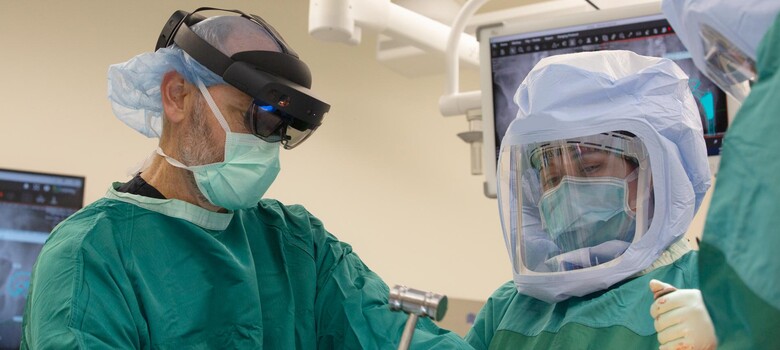Knee Arthroscopic Surgery for Meniscus Tears

The knee is one of the most commonly injured parts of the body, and meniscus tears are often the cause of knee pain and knee injury.
The meniscus is the tough, rubbery cartilage that absorbs shock between the shin bone and thigh bone and distributes weight across the knee joint. When this cartilage tears, it can cause pain and instability in the knee joint. Meniscus tears can result from a twisting injury in sporting activities, such as football or soccer, or even something as simple as turning to put the dishes away.
Symptoms of Meniscus Tears
People of all ages can suffer from meniscus injuries, but each age has different types of tears and different ways to treat the tears. Almost all tears have similar symptoms, including:
- Pain
- Swelling
- Tenderness
- Giving way
- Mechanical symptoms, such as locking, popping, and catching
Diagnosing a Meniscus Tear
When you experience these symptoms, it is important to see an orthopaedic surgeon so your knee can be examined and an accurate diagnosis made.
Occasionally, the diagnosis is obvious based upon a description of the injury and an examination of the patient. However, X-rays and magnetic resonance imaging (MRI) are frequently used to help identify any other associated injuries.
The most common findings on exam include tenderness over the joint line where the meniscus is torn, swelling, and sometimes loss of motion.
Once the diagnosis of a meniscus tear is made, you should discuss your treatment plan with your orthopaedic surgeon. For most people who have a symptomatic meniscus tear, arthroscopic surgery is selected to remove or repair the torn tissue. However, if you have arthritis, you may benefit from injection and physical therapy without surgery.
Arthroscopy has revolutionized how knee surgery is performed. In the past, a torn meniscus required a three- to four-inch incision and an overnight stay (or two) in the hospital.
Now, the meniscus tear can be repaired with the arthroscope through two tiny (less than a half-inch) incisions. The surgery can be performed on an outpatient basis in less than an hour.
Typically, the surgery can be performed under regional anesthesia with sedation, so there's minimal anesthesia risk. Occasionally, small stitches can be placed into the torn meniscus to sew it back together; this technique can successfully treat large tears in younger people. If the tear is small, it may be removed.
Quick Recovery Time
Recovery from arthroscopic meniscus tear surgery is relatively quick, and most people can resume normal activities within a few weeks depending on the size of the tear and the repair involved. The pain relief is dramatic, and the postoperative incision pain is quite minimal.
Physical therapy is often necessary in the recovery process. As with any surgery, there are risks, including the risk of infection or blood clots. Additionally, there are risks associated with anesthesia used during the surgical procedure.
While meniscus tears are common, painful, and activity-limiting, these injuries can be quickly, easily, and successfully identified and treated.



